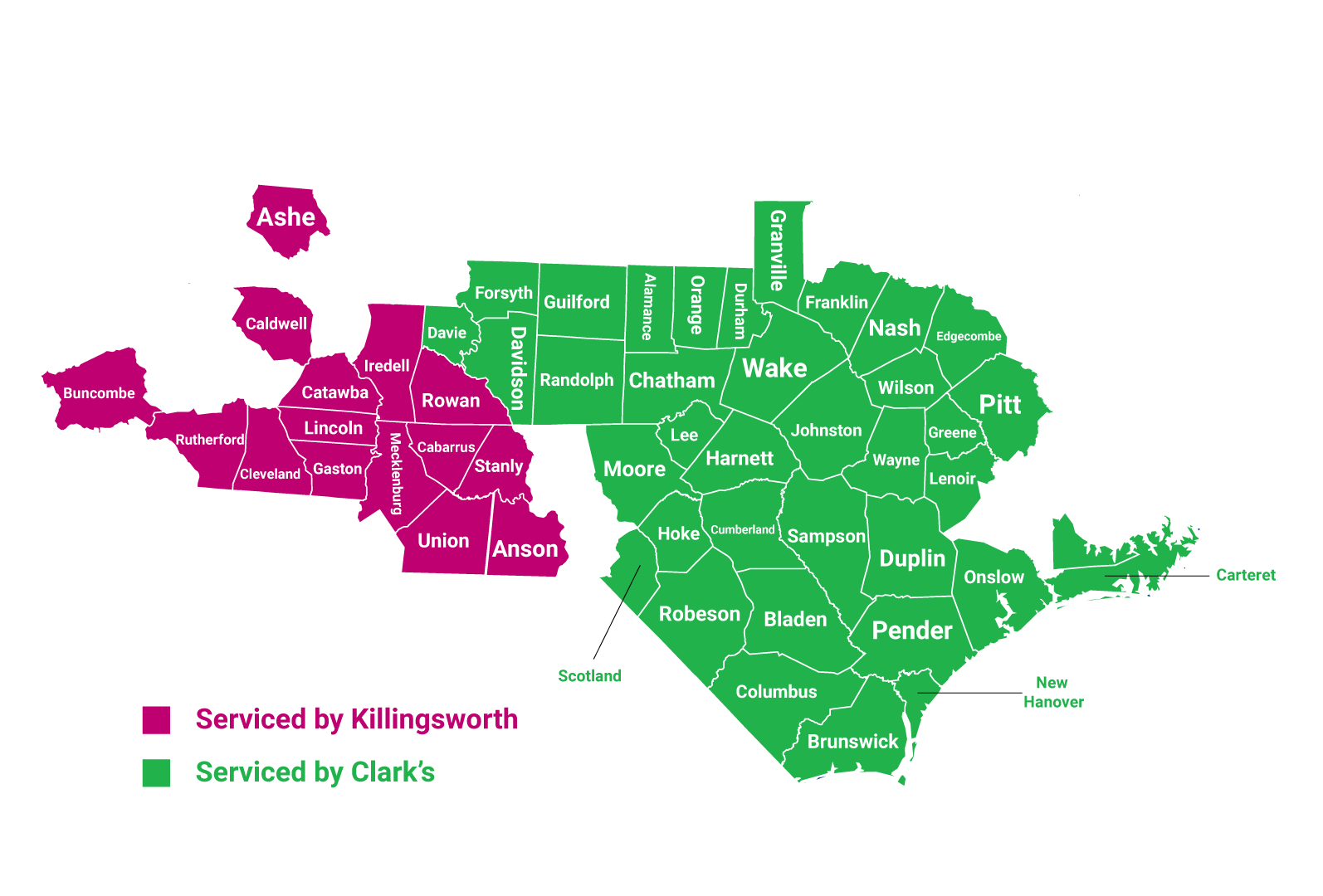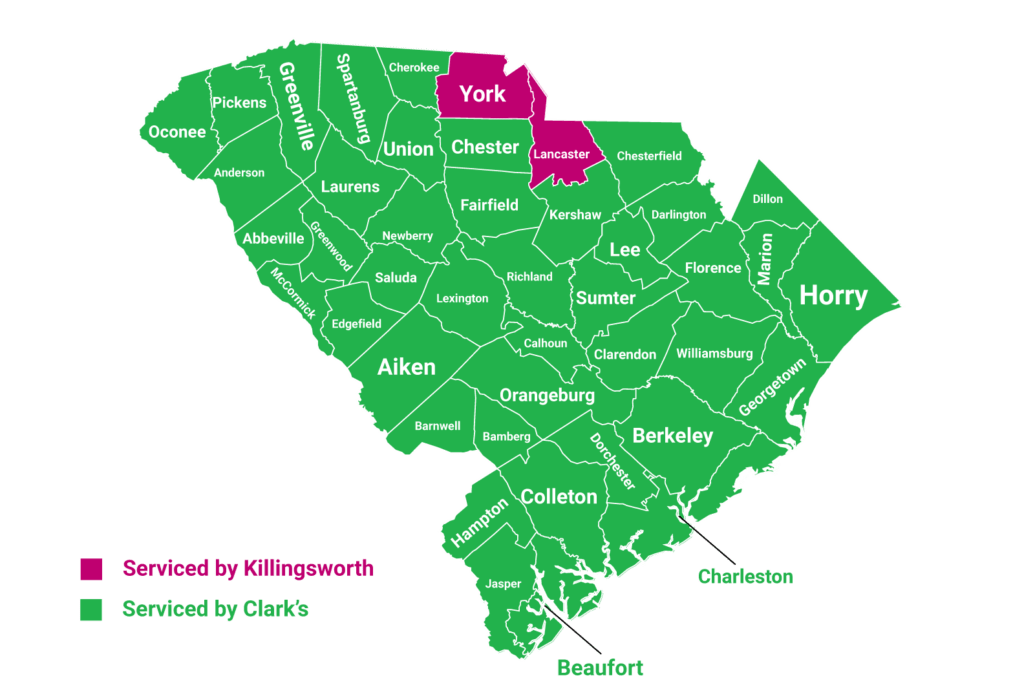Service Areas
At Killingsworth Environmental, we are dedicated to assisting both residential and commercial clients in safeguarding their properties, fostering pest-free living and working spaces. We take pride in serving homes and businesses across the Carolinas. Employing proactive measures, cutting-edge technology, and eco-friendly solutions, we adapt to the evolving requirements for creating healthier environments for individuals. businesses and communities.


North Carolina
Serviced by Killingsworth
- Charlotte, NC
- Concord, NC
- Gastonia, NC
- Huntersville, NC
- Indian Trail, NC
- Matthews, NC
- Waxhaw NC
- Weddington NC
- Monroe NC
- Lincoln County NC
- Kings Mountain NC
- Mount Holly NC
- Dallas NC
- Belmont NC
- Gaston County NC
- Troutman NC
- Mooresville NC
- Statesville NC
- Iredell County NC
- Davidson NC
- Mint Hill NC
- Cornelius NC
- Pineville NC
- Maiden NC
- Hickory NC
- Catawba NC
- Lake Norman NC
- Harrisburg NC
- Midland NC
North Carolina
Serviced by sister company Clark’s Termite & Pest Control

